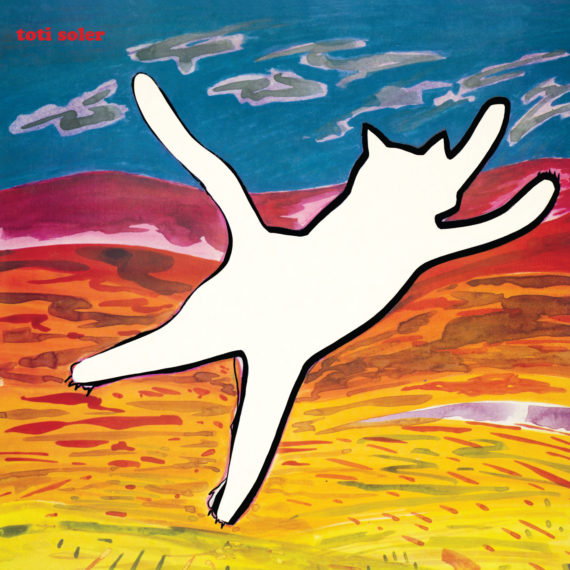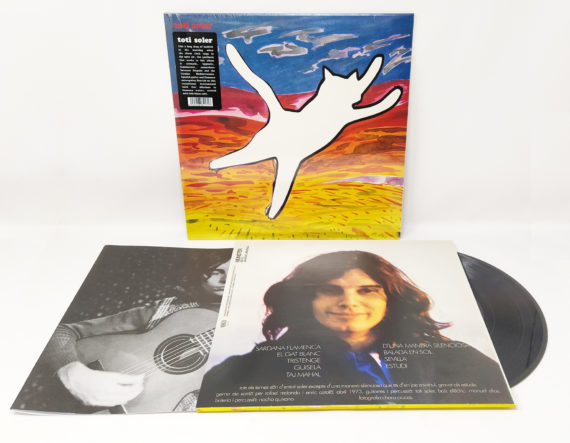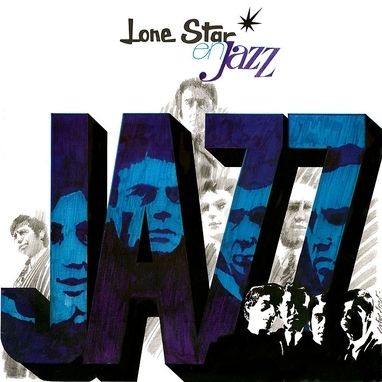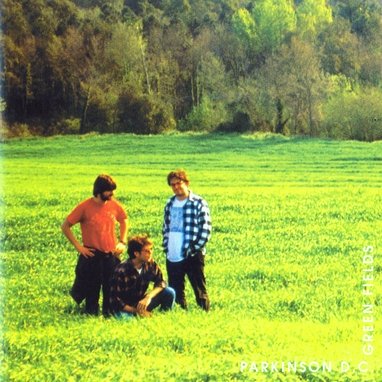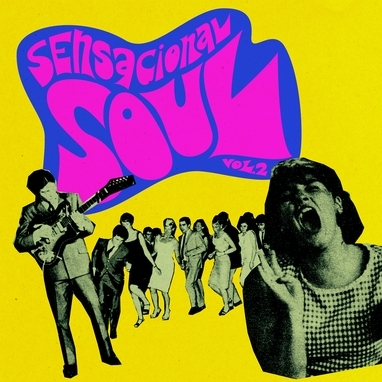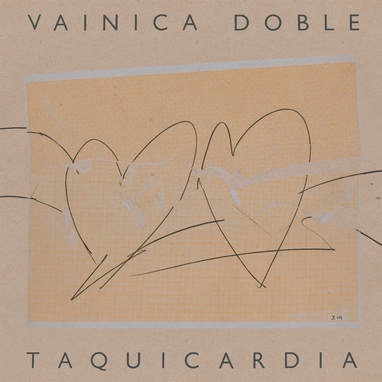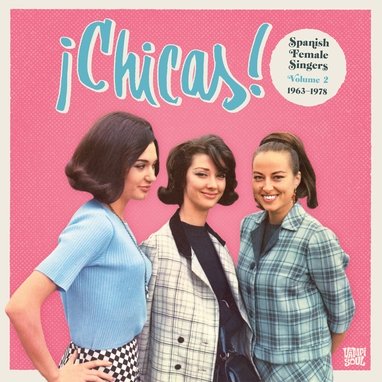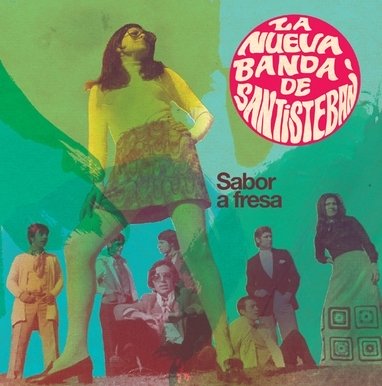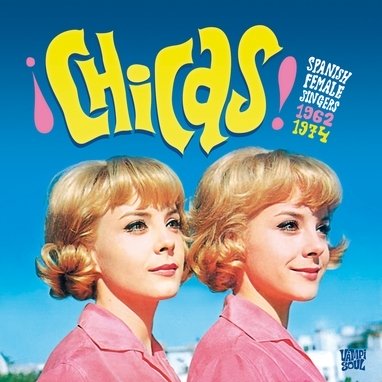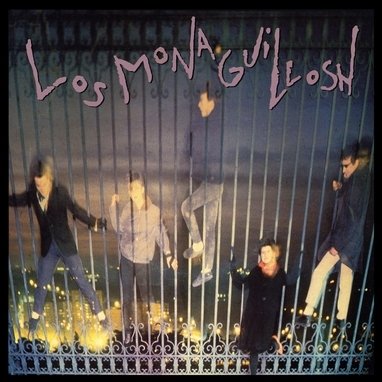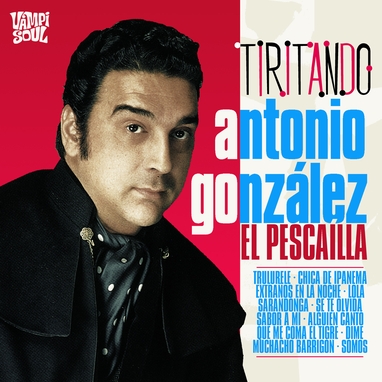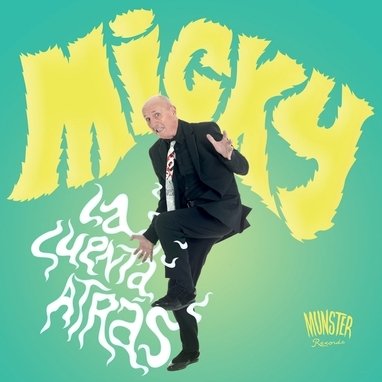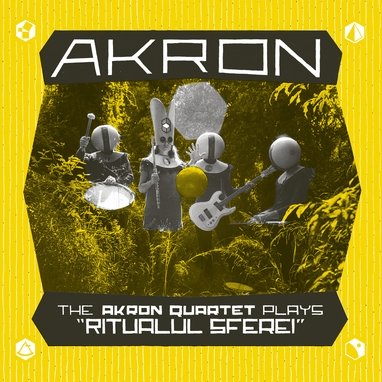Toti Soler
Toti Soler
Like a long drag of hashish in the morning when the alarm clock rings in the open air, the synthesis that works in this album is aromatic, hypnotic, luminescent… somewhere between Hispalis and the Catalan Mediterranean.
Spanish guitar and flamenco metonymies flourish on this transitional instrumental work that ablutions in flamenco waters, scented with folk-blues salts. This 1973 album is seminal in creating flamenco fusion.
The arid but magnetic notes of the first track on the album, ‘Sardana Flamenca’ delve deeper into the subconscious, which Soler recorded on his own with his Spanish guitar, except the electric pieces where members of the band OM helped out.
Reissued on vinyl for the first time. Includes an insert with notes and a rare Toti Soler photo.
Toti Soler’s self-titled second album together with Sabicas, Smash from 1971-72 and the recording Paco de Lucía made with jazzman Pedro Iturralde, were seminal in creating flamenco fusion, a blend that has travelled far. They altered the perception of said music redefining its limits and possibilities.
Soler’s syncretism between Hispalis and the Catalan Mediterranean, another form of fusion, was released perhaps paradoxically by Edigsa, the label that the guitarist worked with the most, the founding spirit of which was to safeguard the local language, Catalan.
In 1972, the ancient call of flamenco took Soler to Andalusia, where he studied under the renowned guitarist Diego del Gastor. When he returned to Barcelona, he commenced a long parallel chapter as acoustic accompanist for the singer-songwriter Ovidi Montllor from Alcoy, leaving rock and the electric guitar behind. However, watts and rock still pulse through in his second LP (self-titled but also referred to as “El Gat Blanc”), 1973, but play a minor role. Spanish guitar and flamenco metonymies flourish on this theoretically transitional instrumental work, which would become one the most popular of his discography.
The arid but magnetic notes of the first track on the album, ‘Sardana Flamenca’ delve deeper into the subconscious, which Soler recorded on his own with his Spanish guitar, except the electric pieces where members of the band OM helped out.
Like a long drag of hashish in the morning when the alarm clock rings in the open air, the synthesis that works in ‘Sardana Flamenca’ is aromatic, hypnotic, luminescent. And it’s magical, despite its sui generis conception. The song formed a quadtych with the following three tracks: ‘El Gat Blanc’, ‘Tristenge’ and ‘Guisela’; ablutions in flamenco waters, scented with folk-blues salts. Introspective or elated, insinuating distance or proximity, these four song titles are teeming with emotion and nuance.
The midpoint of the record is ‘Taj Mahal’, a tribute to his friend and fellow musician, where drums make a timid appearance, demonstrating Soler’s success on this project, even if he feels it was just a prototype.
The B side kicks off with ‘D´una manera silenciosa’, an adaptation of ‘In a silent way’. A delightful flamenco version, as subtle as it was original, and the first of just two electrified tracks on the LP, although achieved so discreetly it’s barely noticeable as the voltage is such a fine thread. Intimate, suffused with the unpretentious virtuosity characteristic of Soler, ‘Balada en sol’ returns to Spanish guitar, making an inspiring crossing from the Catalan coast in Maresme to the bay of San Francisco.
‘Sevilla’, the longest track, became, the second most popular song on the album after ‘Sardana flamenca’. It was a scintillating freak meeting of Smash and Hot Rats, and the last recording for OM, with hefty improvisation and torrents of wah-wah. “There may be some influences from Zappa but the model we were following was Miles Davis.”
The final track, ‘Estudi’ returned to acoustic territory, mixing Andalusi blues with a warm Californian glow.
“El Gat Blanc” had an impact in the press at the time of its release and on listeners; several generations have already discovered in this album one of the key works to understand many of the things that happened later in Catalan and Spanish pop.
Productos relacionados
10,00€
Like a long drag of hashish in the morning when the alarm clock rings in the open air, the synthesis that works in this album is aromatic, hypnotic, luminescent… somewhere between Hispalis and the Catalan Mediterranean.
Spanish guitar and flamenco metonymies flourish on this transitional instrumental work that ablutions in flamenco waters, scented with folk-blues salts. This 1973 album is seminal in creating flamenco fusion.
The arid but magnetic notes of the first track on the album, ‘Sardana Flamenca’ delve deeper into the subconscious, which Soler recorded on his own with his Spanish guitar, except the electric pieces where members of the band OM helped out.
Reissued on vinyl for the first time. Includes an insert with notes and a rare Toti Soler photo.
Toti Soler’s self-titled second album together with Sabicas, Smash from 1971-72 and the recording Paco de Lucía made with jazzman Pedro Iturralde, were seminal in creating flamenco fusion, a blend that has travelled far. They altered the perception of said music redefining its limits and possibilities.
Soler’s syncretism between Hispalis and the Catalan Mediterranean, another form of fusion, was released perhaps paradoxically by Edigsa, the label that the guitarist worked with the most, the founding spirit of which was to safeguard the local language, Catalan.
In 1972, the ancient call of flamenco took Soler to Andalusia, where he studied under the renowned guitarist Diego del Gastor. When he returned to Barcelona, he commenced a long parallel chapter as acoustic accompanist for the singer-songwriter Ovidi Montllor from Alcoy, leaving rock and the electric guitar behind. However, watts and rock still pulse through in his second LP (self-titled but also referred to as “El Gat Blanc”), 1973, but play a minor role. Spanish guitar and flamenco metonymies flourish on this theoretically transitional instrumental work, which would become one the most popular of his discography.
The arid but magnetic notes of the first track on the album, ‘Sardana Flamenca’ delve deeper into the subconscious, which Soler recorded on his own with his Spanish guitar, except the electric pieces where members of the band OM helped out.
Like a long drag of hashish in the morning when the alarm clock rings in the open air, the synthesis that works in ‘Sardana Flamenca’ is aromatic, hypnotic, luminescent. And it’s magical, despite its sui generis conception. The song formed a quadtych with the following three tracks: ‘El Gat Blanc’, ‘Tristenge’ and ‘Guisela’; ablutions in flamenco waters, scented with folk-blues salts. Introspective or elated, insinuating distance or proximity, these four song titles are teeming with emotion and nuance.
The midpoint of the record is ‘Taj Mahal’, a tribute to his friend and fellow musician, where drums make a timid appearance, demonstrating Soler’s success on this project, even if he feels it was just a prototype.
The B side kicks off with ‘D´una manera silenciosa’, an adaptation of ‘In a silent way’. A delightful flamenco version, as subtle as it was original, and the first of just two electrified tracks on the LP, although achieved so discreetly it’s barely noticeable as the voltage is such a fine thread. Intimate, suffused with the unpretentious virtuosity characteristic of Soler, ‘Balada en sol’ returns to Spanish guitar, making an inspiring crossing from the Catalan coast in Maresme to the bay of San Francisco.
‘Sevilla’, the longest track, became, the second most popular song on the album after ‘Sardana flamenca’. It was a scintillating freak meeting of Smash and Hot Rats, and the last recording for OM, with hefty improvisation and torrents of wah-wah. “There may be some influences from Zappa but the model we were following was Miles Davis.”
The final track, ‘Estudi’ returned to acoustic territory, mixing Andalusi blues with a warm Californian glow.
“El Gat Blanc” had an impact in the press at the time of its release and on listeners; several generations have already discovered in this album one of the key works to understand many of the things that happened later in Catalan and Spanish pop.
Productos relacionados
Toti Soler
Like a long drag of hashish in the morning when the alarm clock rings in the open air, the synthesis that works in this album is aromatic, hypnotic, luminescent… somewhere between Hispalis and the Catalan Mediterranean.
Spanish guitar and flamenco metonymies flourish on this transitional instrumental work that ablutions in flamenco waters, scented with folk-blues salts. This 1973 album is seminal in creating flamenco fusion.
The arid but magnetic notes of the first track on the album, ‘Sardana Flamenca’ delve deeper into the subconscious, which Soler recorded on his own with his Spanish guitar, except the electric pieces where members of the band OM helped out.
Reissued on vinyl for the first time. Includes an insert with notes and a rare Toti Soler photo.
Toti Soler’s self-titled second album together with Sabicas, Smash from 1971-72 and the recording Paco de Lucía made with jazzman Pedro Iturralde, were seminal in creating flamenco fusion, a blend that has travelled far. They altered the perception of said music redefining its limits and possibilities.
Soler’s syncretism between Hispalis and the Catalan Mediterranean, another form of fusion, was released perhaps paradoxically by Edigsa, the label that the guitarist worked with the most, the founding spirit of which was to safeguard the local language, Catalan.
In 1972, the ancient call of flamenco took Soler to Andalusia, where he studied under the renowned guitarist Diego del Gastor. When he returned to Barcelona, he commenced a long parallel chapter as acoustic accompanist for the singer-songwriter Ovidi Montllor from Alcoy, leaving rock and the electric guitar behind. However, watts and rock still pulse through in his second LP (self-titled but also referred to as “El Gat Blanc”), 1973, but play a minor role. Spanish guitar and flamenco metonymies flourish on this theoretically transitional instrumental work, which would become one the most popular of his discography.
The arid but magnetic notes of the first track on the album, ‘Sardana Flamenca’ delve deeper into the subconscious, which Soler recorded on his own with his Spanish guitar, except the electric pieces where members of the band OM helped out.
Like a long drag of hashish in the morning when the alarm clock rings in the open air, the synthesis that works in ‘Sardana Flamenca’ is aromatic, hypnotic, luminescent. And it’s magical, despite its sui generis conception. The song formed a quadtych with the following three tracks: ‘El Gat Blanc’, ‘Tristenge’ and ‘Guisela’; ablutions in flamenco waters, scented with folk-blues salts. Introspective or elated, insinuating distance or proximity, these four song titles are teeming with emotion and nuance.
The midpoint of the record is ‘Taj Mahal’, a tribute to his friend and fellow musician, where drums make a timid appearance, demonstrating Soler’s success on this project, even if he feels it was just a prototype.
The B side kicks off with ‘D´una manera silenciosa’, an adaptation of ‘In a silent way’. A delightful flamenco version, as subtle as it was original, and the first of just two electrified tracks on the LP, although achieved so discreetly it’s barely noticeable as the voltage is such a fine thread. Intimate, suffused with the unpretentious virtuosity characteristic of Soler, ‘Balada en sol’ returns to Spanish guitar, making an inspiring crossing from the Catalan coast in Maresme to the bay of San Francisco.
‘Sevilla’, the longest track, became, the second most popular song on the album after ‘Sardana flamenca’. It was a scintillating freak meeting of Smash and Hot Rats, and the last recording for OM, with hefty improvisation and torrents of wah-wah. “There may be some influences from Zappa but the model we were following was Miles Davis.”
The final track, ‘Estudi’ returned to acoustic territory, mixing Andalusi blues with a warm Californian glow.
“El Gat Blanc” had an impact in the press at the time of its release and on listeners; several generations have already discovered in this album one of the key works to understand many of the things that happened later in Catalan and Spanish pop.
Toti Soler
Like a long drag of hashish in the morning when the alarm clock rings in the open air, the synthesis that works in this album is aromatic, hypnotic, luminescent… somewhere between Hispalis and the Catalan Mediterranean.
Spanish guitar and flamenco metonymies flourish on this transitional instrumental work that ablutions in flamenco waters, scented with folk-blues salts. This 1973 album is seminal in creating flamenco fusion.
The arid but magnetic notes of the first track on the album, ‘Sardana Flamenca’ delve deeper into the subconscious, which Soler recorded on his own with his Spanish guitar, except the electric pieces where members of the band OM helped out.
Reissued on vinyl for the first time. Includes an insert with notes and a rare Toti Soler photo.
Toti Soler’s self-titled second album together with Sabicas, Smash from 1971-72 and the recording Paco de Lucía made with jazzman Pedro Iturralde, were seminal in creating flamenco fusion, a blend that has travelled far. They altered the perception of said music redefining its limits and possibilities.
Soler’s syncretism between Hispalis and the Catalan Mediterranean, another form of fusion, was released perhaps paradoxically by Edigsa, the label that the guitarist worked with the most, the founding spirit of which was to safeguard the local language, Catalan.
In 1972, the ancient call of flamenco took Soler to Andalusia, where he studied under the renowned guitarist Diego del Gastor. When he returned to Barcelona, he commenced a long parallel chapter as acoustic accompanist for the singer-songwriter Ovidi Montllor from Alcoy, leaving rock and the electric guitar behind. However, watts and rock still pulse through in his second LP (self-titled but also referred to as “El Gat Blanc”), 1973, but play a minor role. Spanish guitar and flamenco metonymies flourish on this theoretically transitional instrumental work, which would become one the most popular of his discography.
The arid but magnetic notes of the first track on the album, ‘Sardana Flamenca’ delve deeper into the subconscious, which Soler recorded on his own with his Spanish guitar, except the electric pieces where members of the band OM helped out.
Like a long drag of hashish in the morning when the alarm clock rings in the open air, the synthesis that works in ‘Sardana Flamenca’ is aromatic, hypnotic, luminescent. And it’s magical, despite its sui generis conception. The song formed a quadtych with the following three tracks: ‘El Gat Blanc’, ‘Tristenge’ and ‘Guisela’; ablutions in flamenco waters, scented with folk-blues salts. Introspective or elated, insinuating distance or proximity, these four song titles are teeming with emotion and nuance.
The midpoint of the record is ‘Taj Mahal’, a tribute to his friend and fellow musician, where drums make a timid appearance, demonstrating Soler’s success on this project, even if he feels it was just a prototype.
The B side kicks off with ‘D´una manera silenciosa’, an adaptation of ‘In a silent way’. A delightful flamenco version, as subtle as it was original, and the first of just two electrified tracks on the LP, although achieved so discreetly it’s barely noticeable as the voltage is such a fine thread. Intimate, suffused with the unpretentious virtuosity characteristic of Soler, ‘Balada en sol’ returns to Spanish guitar, making an inspiring crossing from the Catalan coast in Maresme to the bay of San Francisco.
‘Sevilla’, the longest track, became, the second most popular song on the album after ‘Sardana flamenca’. It was a scintillating freak meeting of Smash and Hot Rats, and the last recording for OM, with hefty improvisation and torrents of wah-wah. “There may be some influences from Zappa but the model we were following was Miles Davis.”
The final track, ‘Estudi’ returned to acoustic territory, mixing Andalusi blues with a warm Californian glow.
“El Gat Blanc” had an impact in the press at the time of its release and on listeners; several generations have already discovered in this album one of the key works to understand many of the things that happened later in Catalan and Spanish pop.

